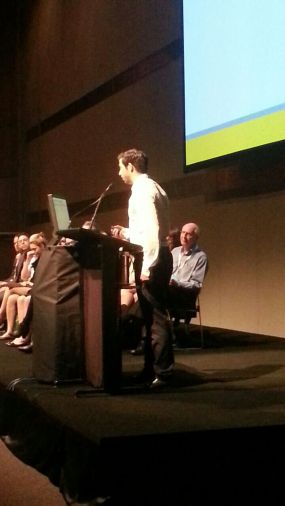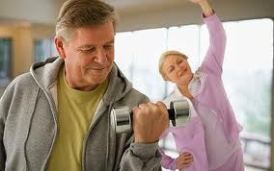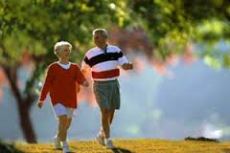Resistance training, or strength training utilises muscle contractions to build up strength by repeating the movements. Particularly during and after cancer treatment, you generally lose a lot of muscle strength and do not return to pre-existing levels. Think about where you used to be. Building up strength with resistance training will assist in getting you there. There are numerous benefits when completing strength training programs that have been shown in exercise-oncology studies and some of these have been listed as:
- increased upper and lower body strength
- reduced body fat
- reduced fatigue
- improved muscle function
- improved cardiorespiratory (heart & lung) function
Other benefits have also been displayed in improved balance (reduced falls risk), sleep quality, pain levels and anxious feelings. The American College of Sports Medicine recommends that strength training should be completed 2-3 times per week for most cancers.
Strength training also does not need to be in a gym, which is a common off-putter for a lot of the general population, but everybody is different. If you have access to weights in a gym, I definitely recommend participating in a weights program, but if not, I have written this post to demonstrate that strength training can be safely and cheaply completed in the comfort of your own home.
The above video introduces the use of resistance bands, which can replace expensive weights (and can also travel on holidays with you! I did this on my tour of the United Kingdom!!). Depending on your strength levels, you can start on a light band, and work your way up to the more challenging ones, and they often come in packages which is good for when you get stronger – here is a link I found to purchase resistance bands but there are plenty more types on sites like Amazon.
I have also put together examples of strength training exercises using these resistance bands and body weight exercises, that assists in attaining the benefits offered by resistance training.
Strength exercises for the arms:
Strength exercises for the back:
Strength exercises for the chest:
Strength exercises for the legs (beginners):
and for advanced
So in a general rule of thumb, we will aim for around 10 repetitions for each set of exercises. You can do each exercise 2-3 times with a 1 minute rest in between which may give you a program that looks like this (and take approx 20-30 mins):
Exercise Repetitions Sets Rest
Sit to Stand 10 2-3 60s
Bicep Curl 10 2-3 60s
Chest press 10 2-3 60s
Standing row 10 2-3 60s
Tricep push 10 2-3 60s
Upright row 10 2-3 60s
And a basic summary for you all:
I put it to you, to give this simple, whole body program a shot, at least 2-3 times per week for the next few weeks and see how you go. Stand in front of a mirror so you can monitor your technique and compare to the videos.
After just a few weeks, you will be able to adapt, and rebuild your muscle strength that you may have lost with treatment. You never know, you may even be able to surpass your strength and ability from before your treatment. I have seen this first hand from some women in my ovarian cancer studies who loved doing strength training and made it a part of their normal weekly habits. They loved not having to rely on anybody else and able to partake in activities they had not done in years.
Let me know how you go!
Also, click follow on the side to subscribe and feel free to pass this onto somebody who you believe will benefit from re-gaining their strength, small steps at a time.
David Mizrahi
Accredited Exercise Physiologist – Exercise Oncology Australia
@Davemiz_EP
d.mizrahi@unsw.edu.au















